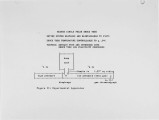| OCR Text |
Show slow since the reverse is thermodynamically favored. OR should however displace CI. There are no measurements of the rate constant for such process. We do note that at low temperature addition to the site of halogenation on olefins is slower than to the unsubstituted site. For displacement reactions which are thermodynamically favored, this is the rate determining step. Recently, Wallington and Kurylo13 have determined the rate constant of OR attack on perfluorobenzene. There are interesting mechanistic questions with respect to the exact reaction mechanism. We believe however, that it can be considered as a first approximation the rate constant for OR addition to a halogenated system. From the data in Table I, it can be seen that this is a very small rate constant, especially in comparison with OR attack on benzene. Thus in all but the most highly chlorinated benzenes hydrogen abstraction will be favored instead of chlorine displacement. All of this is rendered somewhat moot in the context of the rate constant of OR with CO. This is the principal means by which OR is converted to C02. Note however, the significant difference between the rate constant for OR attack on CO and other organic compounds. Furthermore, it should be noted that for many organics, particularly that found in municipal solid wastes CO is readily formed. Thus if the effluents from an incinerator are due to a deficiency in the oxidative mechanism CO could indeed serve as a marker of the destruction efficiency of the incinerator. However, in our earlier discussion we have derived a relation between the number of nines destruction limit and rate constants. If we now assume an effluent CO level in the 100 ppm range, then this is roughly equivalent to a 3 nines destruction. The consequence of this is that for practically all the organics there should be total destruction. The fact that this is not the case suggest 9 |

























